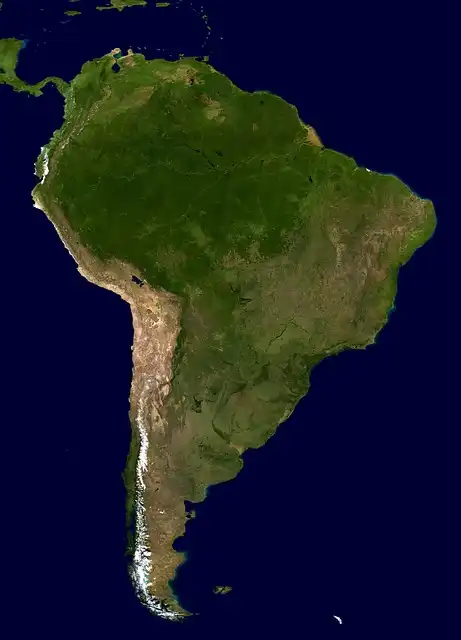American Liberalism: History, Challenges, and Evolution

Explore American liberalism's history, challenges, and evolution. From its origins to modern critiques, understand its core tenets and shifts. Examine its complex relationship with social change and political volatility.
Political conservatives linked liberals with extreme politics, atheism, communism, and what Schultz refers to as “social effeteness”. Richard Nixon and Spiro Agnew weaponised this narrative in the 1972 governmental political election and inflicted a tragic defeat on the Democratic Event’s candidate, George McGovern.
The white liberals’ positive outlook regarding humanity and the opportunities for incremental progression clashed with the Black lobbyists’ prophetic sensibility, their more pessimistic sight of humanity, and their demands for nationwide repentance and complete change of American society.
Hence, liberals can locate themselves supporting market teams whose agents are, in turn, nourished by various kinds of religious fervour– or else by Marxism, feminism, postmodernism and various other -isms that are not specifically interested in liberalism’s conventional concepts, such as liberty and toleration. Goals might be shared at a high theoretical level, but with starkly various understandings of legitimate techniques and acceptable costs.
Liberalism’s Core Principles
At a particular degree of abstraction, liberalism favours toleration, private freedom, acceptance of social pluralism, and careful optimism regarding the possibilities for intellectual and social progression. With these core ideas go extra certain political principles, including free speech, secular government, and the guideline of law.
It’s worth including that, as liberalism took its early types, it had input from numerous groups. These included religious non-conformists, free-market economic experts influenced by Adam Smith, practical thinkers, and European thinkers (such as de Staël and Consistent) that appreciated the French Revolution in its early years before the Regime of Terror.
In clarifying the obstacles to American liberalism during the lengthy 1960s, Schultz includes in our understanding. Yet Why Everybody Despises White Liberals is seriously insufficient: it glosses over vital problems and whole years.
Historical Roots of Liberalism
However, liberalism defies definition. Its origins can be traced to very early European modernity, and specifically to discussions over religious toleration in the 17th and 16th centuries. Its more instant history was the 18th-century Age of Enlightenment, culminating in terrific changes in America and France.
Schultz shows up supportive to the Black civil liberties leaders of the moment, whose impatience with the pace of adjustment was understandable. But he likewise reminds us of the considerable initiative, self-sacrifice and achievements of white liberals throughout the 1950s and very early 1960s, finishing in dramatic campaigns such as the landmark Civil Rights Act.
As Schultz tells the tale, by the late 1950s and very early 1960s, some figures on America’s left were shedding persistence with what they viewed as a stultifying, governmental, politically shy liberal establishment.
The book’s importance is much less evident for those of us who live outside the US, however it guarantees to clarify America’s political volatility and society warring, which at some point influence us all somehow.
Why Every Person Hates White Liberals is composed by an American academic for an American audience. Roosevelt was successful in redefining the words liberal and liberalism for the functions of American selecting national politics. Much more just recently, liberalism has actually been condemned for the toughest results of what is known as neoliberalism, although the latter has little bit to do with traditional liberal concepts such as private flexibility, social toleration, or the policy of law.
Roosevelt did well in redefining the words liberal and liberalism for the functions of American selecting national politics. Afterwards, American liberalism can map its history from the 1930s New Offer.
When fast and comprehensive adjustment seems necessary, might this warrant illiberal techniques, such as attempts to regulate what individuals say and think? In the past, revolutionaries have typically believed so, but the dispute with traditional liberalism is evident.
For Schultz, the actual words liberal and liberalism are irredeemable in the United States. Be that as it may, Schultz backs off taking a look at how the issues for American liberals go deeper than words and slogans.
Initially of the 19th century, liberalism progressed right into something unique, with its own name, starting institutions and numbers. It replied to an altered globe marked by population development, advanced turmoil, an expanding round of public conversation in Europe and The United States And Canada, and the starts of industrialisation and business capitalism.
Actually, historic liberal reforms in locations such as health care and social security remain widely preferred with the American body politic, yet the real words liberal and liberalism appear to have actually ended up being hazardous.
Liberalism and Social Justice Movements
As the lawful scholar Owen M. Fiss has actually said, the debates of that age exposed “liberalism divided”. On the left side of politics, identity-based demands, (mild) socialist influences, and protestor methods to legal interpretation increasingly encountered the liberal impulse to limit federal government power and support specific liberty. This rupture within American liberalism, or perhaps within America’s wider political left, has never healed.
Component of the trouble was a mismatch, not only of concerns, however understandings of what was reasonably attainable. As radical left-wing activities arised during the 1960s, their leaders distanced themselves from liberals and liberalism.
Yet Schultz appears prideful of any concept that American liberals occasionally divert in illiberal instructions, or that this could threaten their qualifications if they still declare to be part of the more comprehensive liberal practice springing from the Knowledge.
In this setting, liberals deal with a problem. Exactly how much should they preserve typical liberal perfects, and just how far should they relocate towards non-liberal, and potentially illiberal, ideologies if these appear more appealing for the purposes of social change?
With that said in mind, it’s typically clear sufficient what is being declared if a person is implicated, in a political context, of being “illiberal”. The allegation suggests intolerance, particularly of opposed perspectives or uncommon ways of life, and hostility to specific freedom.
Additionally, as oppressed teams identify each other’s struggles and develop practical political coalitions, they tend to see analogies in between each various other’s reasons and try an ideological synthesis. As they do so, they are likely to look for understandings from whatever sources they can locate. Significantly, they need not restrict themselves to ideas and thinkers from the liberal political tradition.
I can just presume in exploring what it leaves out, but also for a beginning, Schultz overlooks essential advancements in the late 1970s and the 1980s. This was a time marked by fraught debates over censorship, pornography, abortion and many other hot-button issues. These disputes severely checked what liberalism stood for in the United States.
For Schultz, for that reason, American liberalism in the New Bargain tradition suggests “generosity of spirit and development of private flexibility” or utilizing the power of the state “to make sure specific freedom for the maximum variety of people”.
Schultz stresses an “possessing the libs” approach that has lately prevailed on the American. Anybody with also a little left-wing, liberal or progressive tendencies is now painted by conservatives as an unhinged radical deserving of mockery and political, if not personal, destruction. The “libs” have thus become an imaginary adversary versus which inconsonant groups on the right can rally and merge.
Criticism and Evolution of Liberalism
Schultz sees the term liberal as having been abandoned throughout the 1970s, in the feeling that virtually no one in politics or public argument wished to understand it. Rather, it was utilized to classify others. Much more just recently, liberalism has actually been blamed for the harshest end results of what is called neoliberalism, although the last has bit to do with standard liberal concepts such as private flexibility, social toleration, or the policy of law.
Schultz pinpoints 1964 as a vital year when American liberalism started to shed its stature. As he defines in detail, there was a significant adjustment in political tone between 1963 and 1964, when Black radicals started to criticise white liberal allies, whom they had concerned regard as hypocritical and spineless. From this point, white liberal crystallised as a regard to abuse on the political Left.
After a sketchy intro to liberalism, Schultz focuses on the 1930s in the US, when the depression-era governmental opponents Herbert Hoover and Franklin D. Roosevelt each asserted to be a real liberal. As Schultz observes, few Americans prior to this had thought of themselves as liberals.
Why Everybody Despises White Liberals is written by an American scholastic for an American target market. It attempts to evaluate the present political situation in the USA in the light of background. It asks exactly how American liberals must reply to a circumstance where they are commonly seen with disdain.
Provided its mix of impacts, liberalism never came to be a linked belief or political concept. It was a lot more a tradition or tendency in politics. It took lots of directions, regularly examined itself, thrown out old concepts and welcomed brand-new ones, and altered emphases in reaction to emerging scenarios.
The term neoliberal has a history going back to at least the 1930s, yet has actually been put on administrations and routines not otherwise considered liberal. As Schultz reminds us, it was initial used pejoratively to the economic policies of the ruthless Chilean dictator Augusto Pinochet.
American liberals sustained a lot even worse from the conservative side of politics. During the “lengthy” 1960s– the decade and a fifty percent from the late 1950s to the very early 1970s– there was a right-wing backlash. Trick conventional numbers, such as William F. Buckley, ceded the term liberal to their opponents, which Herbert Hoover had actually refused to do in the 1930s. After that they attacked it and every little thing that it stood for within their understanding.
For Schultz, the actual words liberal and liberalism are irredeemable in the US. Be that as it may, Schultz backs off analyzing exactly how the problems for American liberals go deeper than words and mottos.
Russell Blackford does not help, seek advice from, own shares in or receive financing from any kind of business or company that would certainly take advantage of this post, and has actually divulged no pertinent affiliations beyond their scholastic visit.
Schultz skates over this swiftly, but he appropriately refers to Madame de Staël and Benjamin Continuous as originating figures in 19th-century France, and to Spain and Sweden as leaders in the surge of liberal political events.
Individuals who market themselves as liberals can sometimes be exposed as illiberal in this wide feeling. If that seems paradoxical, the mystery is easily solved as long as we’re clear concerning what ideas are in play.
This points to a bigger trouble that just became more difficult in the decades that adhered to. It’s one point to protect the rights and flexibilities of one or one more oppressed team, viewing the problems from a traditional liberal perspective. It’s a various thing to protect a group’s legal rights and flexibilities by adopting whatever ideology or rationalisation the group itself (or its leaders) may develop.
Comprehensive backgrounds of liberalism provide the perception of a chameleon-like top quality. At various times, liberals have suited economic policies from unfettered free-market commercialism to a degree of socialism. Challenged with such a rich– or even inconsistent– custom, we might feel muddle-headed in giving liberalism any type of recognisable web content.
At one factor, Schultz goes down a clue to a few of the deeper issues. Adhering to the historian David L. Chappell, he identifies a basic detach in between white liberal radicals in the 1960s and the Black lobbyists that pertained to detest them. In spite of some usual objectives, they had different temperaments and worldviews, based in different experiences and cultural histories.
1 American liberalism2 Liberal ideology
3 Political history
4 Political volatility
5 Social change
6 US politics
« Iran’s Deception & Global Threats: An Intelligence PerspectiveSheen’s Memoir: Clinton Affair & Detox Revelations »
